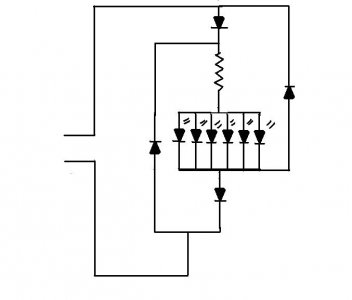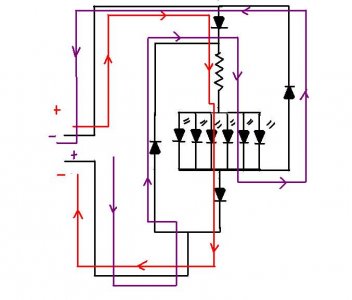Re: is it all about the HID bulbs then?!?
You are correct Mike - my sincere apologies. I was surprised since I literally just received them a couple of days ago - guess helped clean them out!
I am somewhat impressed they remove that option from their drop-down list when they are out of stock
According to their out of stock page they are expecting those to be available on 12-20.
I do stand behind that the correct information was available on the thread & that a little deeper research into the SuperBrightLeds site would have given the information I just found. My point was that you chose to disregard the 168/194 information supplied & appeared to be more intent on following the Sylvania recommendation.
Yes, I edited my initial comment re 3652 being applicable designation - I realized that I had speculated & didn't know for fact, so followed up with additional research. To be honest I had to search "google" to come across the 3652 - 194/168 is a much more common term for that item, especially since they are primarily used in Import vehicles. E-Bay search for example on "LED & 3652" in auto parts & accessories yields zero returns; same search on "LED & 194" has 197 items; "LED & 168" has 135 items.
You can take a look at those also & see if any take your fancy - LED & 194 E-Bay Search. or refer to the other site I linked previously.
It is your personal preference whether they have 1, 2 or 5 or 6 or ? LEDs, as long as the base is the same. I would speculate that all are going to be generally quite white (relative to incandescents) but may have a touch of blue depending on the quality of the device. That will also come down to personal assessment & taste - for example, I have a picture of the WLED6 (which I find white) posted & some users find them too blue. Generally (again dependent on device type & quality) more leds will produce a more intense light. LED's are generally very directional so you will find some multi-LED items have physically oriented them to compensate. Again, your personal preference as to whether you want focused or wide-angle.
Hope this is helpful - none of it meant to be argumentative.
Mike Hughes said:D'Ecosse --
The item described in extreme specificity in the thread is nowhere to be found on the page.
http://www.superbrightleds.com/cgi-bin/store/commerce.cgi?product=CAR
WLED 6-LED bulb
12 VDC 6-LED Wedge Base bulb (194/168 type)
Our brightest bulb of this type
Non Polarized
Select LED Color
Red
Amber
Blue
Green
You are correct Mike - my sincere apologies. I was surprised since I literally just received them a couple of days ago - guess helped clean them out!
I am somewhat impressed they remove that option from their drop-down list when they are out of stock
[/FONT]STOCK [SIZE=+1][/SIZE][SIZE=+1]
[/SIZE]Out of stock items are removed from the online store and cannot be ordered until we we have stock again, we do not accept orders for out of stock items. Please see our "out of stock" page to seen when items are expected back in. [FONT=Arial, Helvetica, sans-serif]http://www.nsxprime.com/forums/
According to their out of stock page they are expecting those to be available on 12-20.
I do stand behind that the correct information was available on the thread & that a little deeper research into the SuperBrightLeds site would have given the information I just found. My point was that you chose to disregard the 168/194 information supplied & appeared to be more intent on following the Sylvania recommendation.
Yes, I edited my initial comment re 3652 being applicable designation - I realized that I had speculated & didn't know for fact, so followed up with additional research. To be honest I had to search "google" to come across the 3652 - 194/168 is a much more common term for that item, especially since they are primarily used in Import vehicles. E-Bay search for example on "LED & 3652" in auto parts & accessories yields zero returns; same search on "LED & 194" has 197 items; "LED & 168" has 135 items.
You can take a look at those also & see if any take your fancy - LED & 194 E-Bay Search. or refer to the other site I linked previously.
It is your personal preference whether they have 1, 2 or 5 or 6 or ? LEDs, as long as the base is the same. I would speculate that all are going to be generally quite white (relative to incandescents) but may have a touch of blue depending on the quality of the device. That will also come down to personal assessment & taste - for example, I have a picture of the WLED6 (which I find white) posted & some users find them too blue. Generally (again dependent on device type & quality) more leds will produce a more intense light. LED's are generally very directional so you will find some multi-LED items have physically oriented them to compensate. Again, your personal preference as to whether you want focused or wide-angle.
Hope this is helpful - none of it meant to be argumentative.















